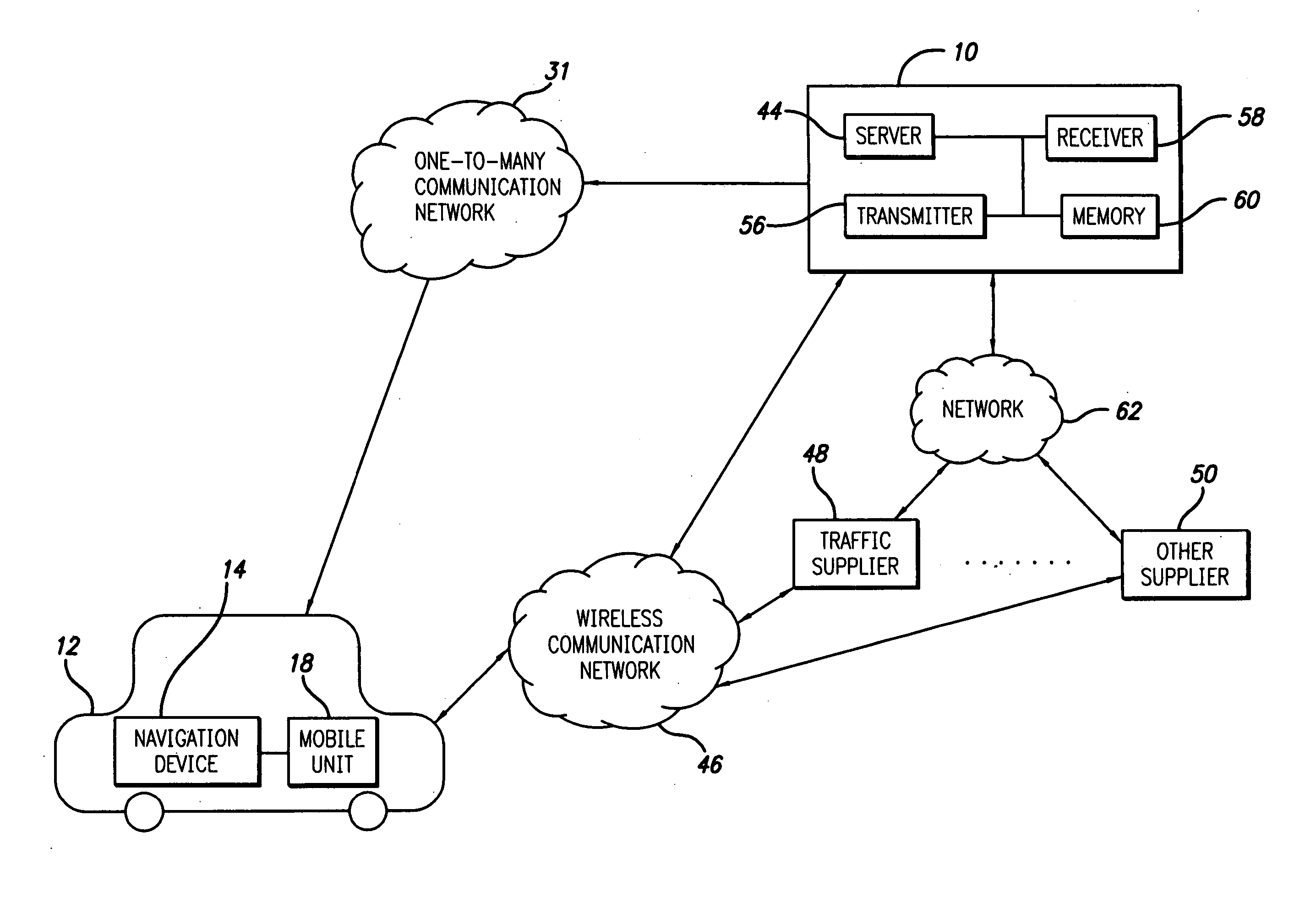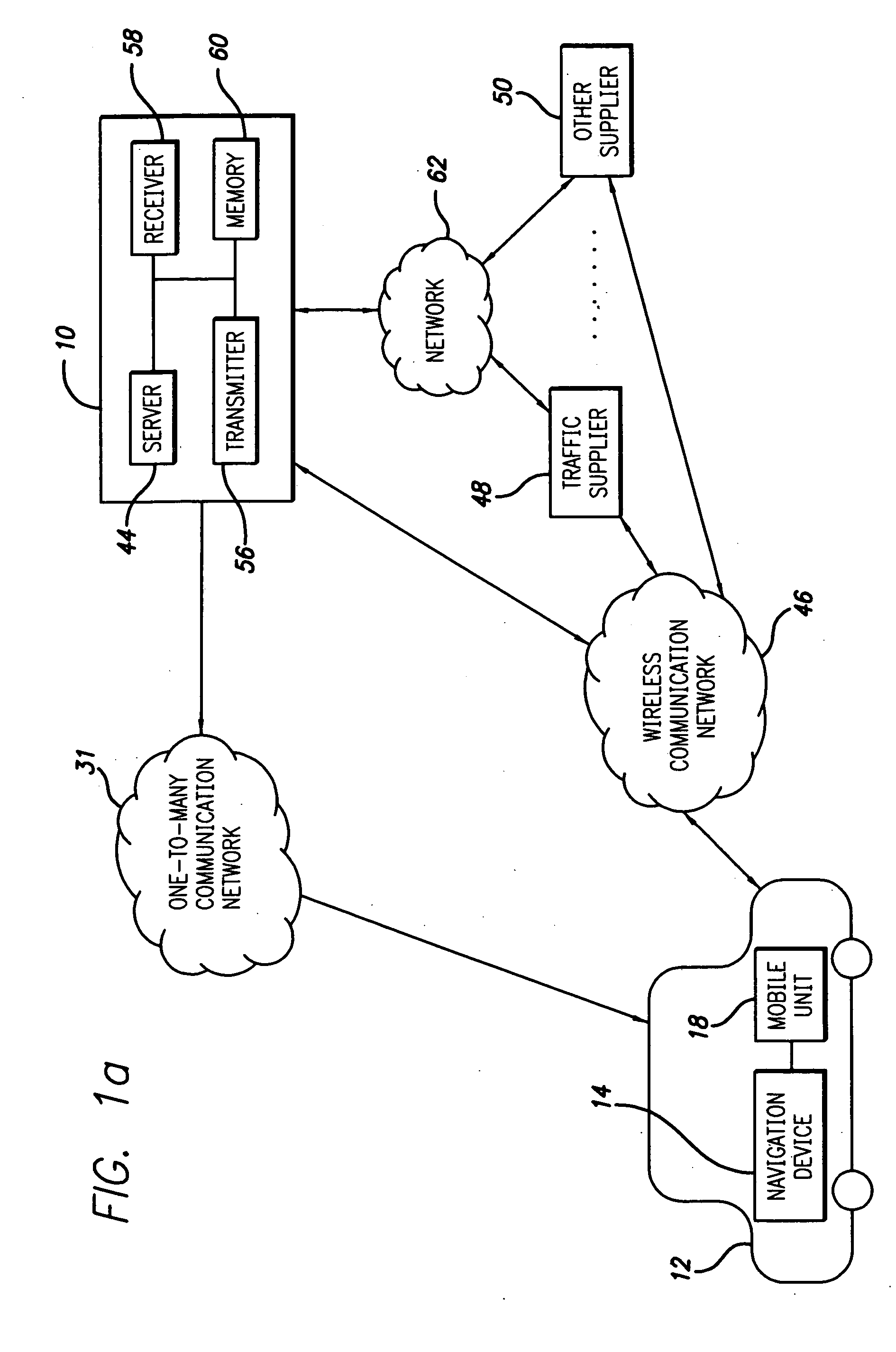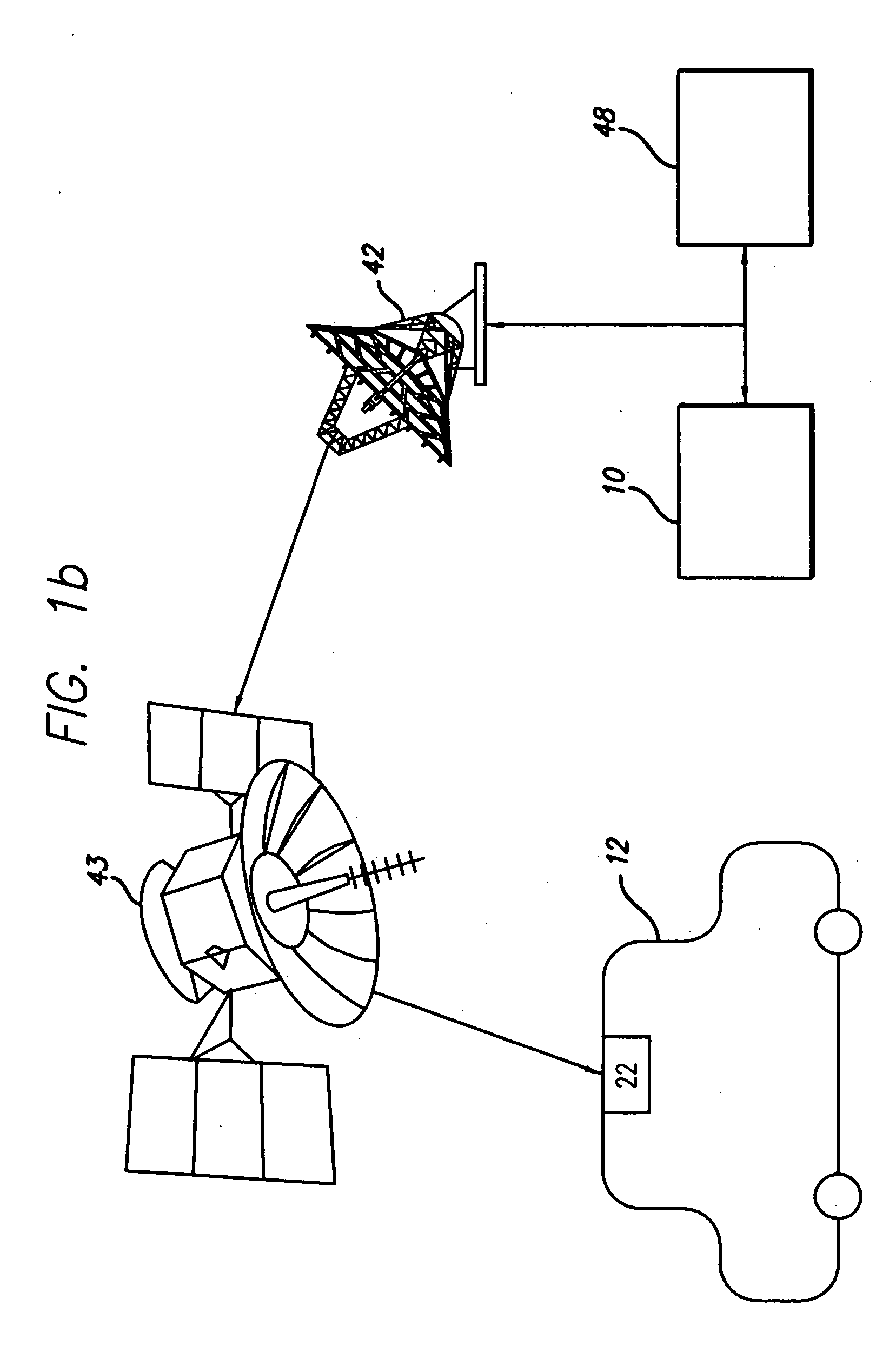Bandwidth and memory conserving methods for a vehicle navigation system
a vehicle navigation system and memory conservation technology, applied in the field of vehicle navigation system bandwidth and memory conserving methods, can solve the problems of wasting precious bandwidth, inflexible and cumbersome methods for providing and utilizing traffic information for navigation, and many vehicles that require the same information, so as to reduce bandwidth needs, reduce bandwidth needs, and save processing hardware
- Summary
- Abstract
- Description
- Claims
- Application Information
AI Technical Summary
Benefits of technology
Problems solved by technology
Method used
Image
Examples
Embodiment Construction
[0068] The present invention is directed to a system and method for facilitating the exchange of traffic information between a remote location and a vehicle. In particular, the present invention is directed to a system and method that includes a vehicle that exchanges traffic information with the remote location by way of one or more communication networks in a manner that conserves bandwidth while providing sufficient traffic information to the vehicle.
[0069]FIG. 1a, shows a first embodiment of a system for facilitating the exchange of information between a remote location 10 and a vehicle 12 pursuant to aspects of the invention. The vehicle 12 includes a navigation device 14. Referring now also to FIG. 1c, the navigation device 14 may include an output unit 21, a receiver unit 22, an input unit 23, a position detection unit 25, a navigation memory unit 30, a navigation processor unit 26, and an RF transceiver unit 52 that are all in electrical communication with one another. The ...
PUM
 Login to View More
Login to View More Abstract
Description
Claims
Application Information
 Login to View More
Login to View More - R&D
- Intellectual Property
- Life Sciences
- Materials
- Tech Scout
- Unparalleled Data Quality
- Higher Quality Content
- 60% Fewer Hallucinations
Browse by: Latest US Patents, China's latest patents, Technical Efficacy Thesaurus, Application Domain, Technology Topic, Popular Technical Reports.
© 2025 PatSnap. All rights reserved.Legal|Privacy policy|Modern Slavery Act Transparency Statement|Sitemap|About US| Contact US: help@patsnap.com



